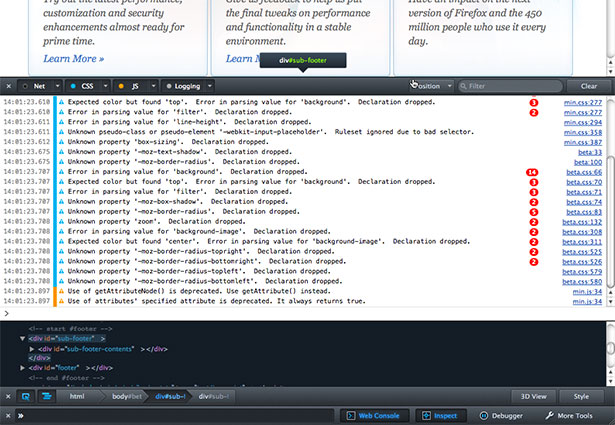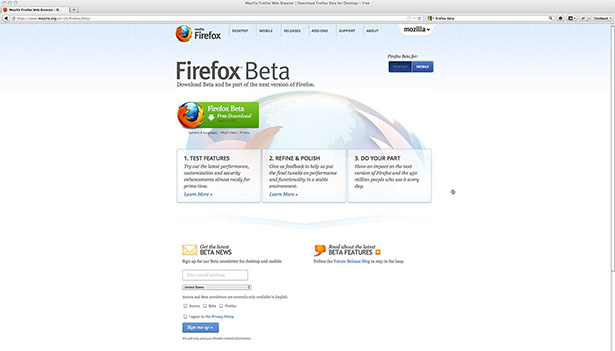
 Now that the dust has begun to settle on Mozilla's go-stop-go launch for Firefox 16, the company is able to turn its full attention to the next release; Firefox 17.
Now that the dust has begun to settle on Mozilla's go-stop-go launch for Firefox 16, the company is able to turn its full attention to the next release; Firefox 17.
Mozilla's adoption of the rapid release program means that when Firefox 16 was pushed to release status, the production line kicked in and all existing versions took a step up the chain. Firefox 17 is now the current beta version, Firefox 18 has moved from central to aurora and the new kid on the schedule is Firefox 19.
Mozilla's schedule is designed to release a new version every six weeks, and Firefox 17 is expected to be with us around the 20th November.
The major enhancement in Firefox 17 is expected to be Mozilla's new Social API. Although not currently available as part of the beta release — updates are expected soon — the Social API is an attempt to tie the browsing experience to the likes of Facebook and Twitter. The integration will be in the form of a side panel, which means you can presumably ignore it if you prefer to access social media on your mobile device.
Numerous blogs have pointed to the failure of browsers like Flock, that tried the same trick and failed, but Flock was never in the same league as Firefox; Mozilla's share of the browsing market may have been declining for years but they're still a major force.
Importantly, Mozilla aren't in this alone; although their intention is to leave implementation to the various social networks, initially they're working with Facebook to add the latter's Facebook Messenger to Firefox using the Social API. You'll be able to try it out in the next few weeks.
There're also enhancements to the Markup Panel aimed at web developers, however anyone with an established set of development tools is unlikely to be swayed by the ability to edit HTML, particularly when the results are only viewable in Firefox until you copy and paste the code into your normal editor.

There are also some minor UI tweaks, not so apparent in the current beta version, changes should start to become more noticeable over the coming weeks.
The Mozilla development most like to have an impact is the integration of IonMonkey, a JavaScript compiler that will boost performance by around 17.5% over the current release. Sadly however that will not be available until Firefox 18, currently scheduled for the first week of January 2013.
History tells us that the route to success is to develop a focused set of features and implement them better than anyone else. You might well be wondering therefore, why Mozilla chose social networking over support for CSS Grid Layouts, or even the hugely useful Range input type. The answer is that Firefox already has a reputation for adequate CSS and HTML5 support (IE is the back-marker there). Seeing the future of the web as increasingly social, Mozilla hope to stake a claim ahead of the anticipated rush.
You can take a sneak peak at Firefox 17 by downloading the beta version or monitor the latest developments here.
Are Mozilla moving in the right direction with Firefox 17? Is there too much social network integration in applications? Let us know your views in the comments.
Featured image Firefox image via Shutterstock.
Ben Moss
Ben Moss has designed and coded work for award-winning startups, and global names including IBM, UBS, and the FBI. When he’s not in front of a screen he’s probably out trail-running.


















